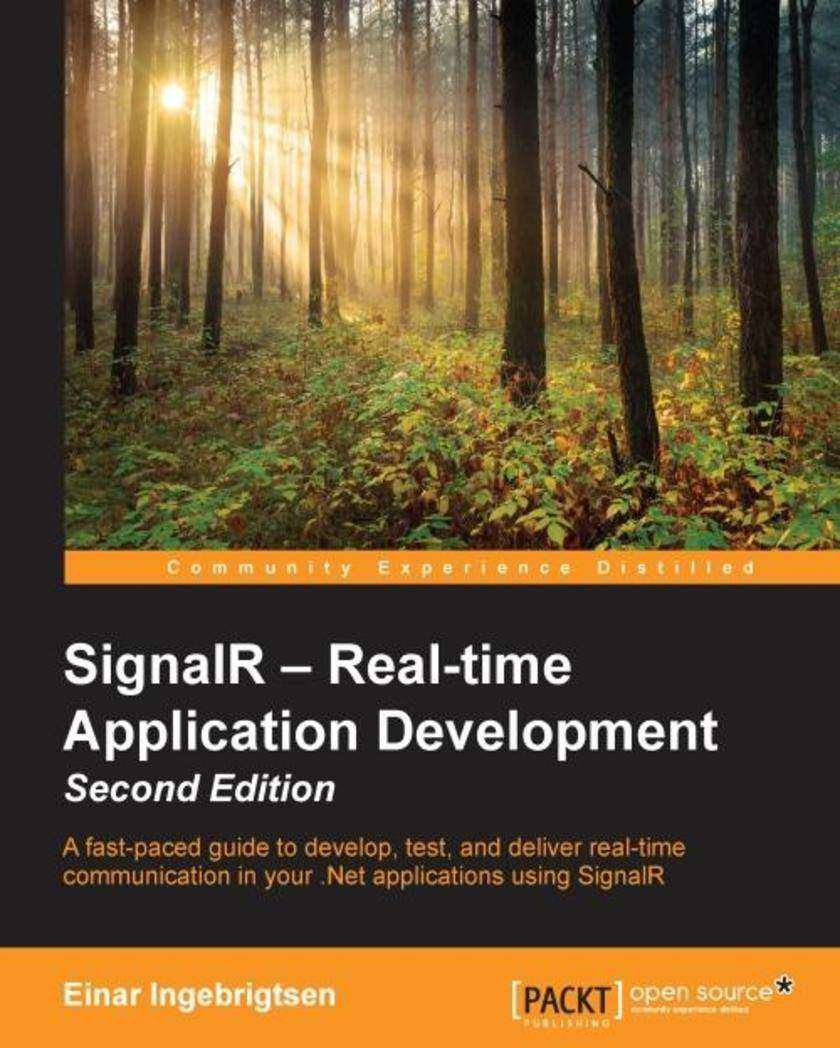
SignalR – Real-time Application Development - Second Edition
¥71.93
A fast-paced guide to develop, test, and deliver real-time communication in your .Net applications using SignalR About This Book Build and test real-time apps in .Net using the new features of SignalR Explore the fundamentals and the new methods and functions in the latest version of SignalR along with developing a complete application from scratch A progressive, hands-on guide to gain an understanding of the SignalR framework Who This Book Is For If you are a .Net developer with good understanding of the .Net platform then this is an ideal book for you to learn how to build real-time apps using the SignalR framework. What You Will Learn Explore the basic knowledge and understanding of SignalR Get to know how to connect client to the server Connecting a client with a server and setting a hub Creating group connections together Understand how to have state in the client to have specific operations Securing SignalR connections How to scale SignalR across multiple servers Building a client for WPF Building a client using Xamarin targeting Windows, iPhone and Android Get to grips with monitoring the traffic in SignalR using Fiddler for Windows and Charles for OSX Setting up code to host SignalR using OWIN In Detail With technology trends, demands on software have changed with more and more skilled users. Over the past few years, with services such as Facebook, Twitter and push notifications on smartphones, users are now getting used to being up to date with everything that happens all the time. With SignalR, the applications stay connected and will generate notifications when something happens either from the system or by other users thus giving new opportunities to enter into this new, exciting world of real-time application development. This is a step-by-step guide that follows a practical approach helping you as a developer getting to get started with SignalR by learning its fundamentals. It will help you through building real-time applications using the new methods and functions in the SignalR framework. Starting from getting persistent connections with the server, you will learn the basics of connecting a client to the server and how the messaging works. This will be followed by setting up a hub on the server and consuming it from a JavaScript client. Next you will be taught how you can group connections together to send messages. We will then go on to know how you can have state in the client to handle specific operations like connecting or disconnecting. Then, moving on you will learn how to secure your SignalR connections using OWIN and scaling SignalR across multiple servers. Next you will learn building a client for WPF and building a client using Xamarin that targets Windows Phone, iPhone and Android. Lastly, you will learn how to monitor the traffic in SignalR using Fiddler, Charles and hosting SignalR using OWIN. Style and approach This is an example- oriented and comprehensive guide to learning the fundamentals of SignalR to build real-time applications. It will help you build real-time applications on the .Net platform in a step-by-step manner along with giving teaching techniques to deal with possible performance bottlenecks and other key topics.

Unreal Engine Physics Essentials
¥71.93
Gain practical knowledge of mathematical and physics concepts in order to design and develop an awesome game world using Unreal Engine 4 About This Book Use the Physics Asset Tool within Unreal Engine 4 to develop game physics objects for your game world Explore the Collision mechanics within Unreal Engine 4 to create advanced, real-world physics A step-by-step guide to implementing the Physics concepts involved in Unreal Engine 4 to create a working Vehicle Blueprint Who This Book Is For This book is intended for beginner to intermediate users of Epic Games' Unreal Engine 4 who want to learn more about how to implement physics within their game-world. No matter what your knowledge base of Unreal Engine 4 is, this book contains valuable information on blueprint *ing, collision generation, materials, and the Physical Asset Tool (PhAT) for all users to create better games. What You Will Learn Get to know basic to intermediate topics in mathematics and physics Create assets using the Physics Asset Tool (PhAT) in Unreal Engine 4 Develop Collision Hulls, which are necessary to take advantage of Unreal Engine 4’s physics and collision events Use constraints to create advanced physics-based assets for your game-world Working knowledge of physics bodies, physics damping, and friction within Unreal Engine 4 Develop physical materials to recreate real-world friction for substances such as glass and ice Create a working vehicle blueprint from scratch using assets provided by Unreal Engine 4 Gain knowledge about implementing advanced physics in Unreal Engine 4 using C++ programming In Detail Unreal Engine 4 is one of the leading game development tools used by both AAA and independent developers alike to create breathe-taking games. One of the key features of this tool is the use of Physics to create a believable game-world for players to explore. This book gives readers practical insight into the mathematical and physics principles necessary to properly implement physics within Unreal Engine 4. Discover how to manipulate physics within Unreal Engine 4 by learning basic real-world mathematical and physics concepts that assist in the implementation of physics-based objects in your game world. Then, you'll be introduced to PhAT (Physics Asset Tool) within Unreal Engine 4 to learn more about developing game physics objects for your game world. Next, dive into Unreal Engine 4’s collision generation, physical materials, blueprints, constraints, and more to get hands-on experience with the tools provided by Epic to create real-world physics in Unreal Engine 4. Lastly, you will create a working Vehicle Blueprint that uses all the concepts covered in this book, as well as covering advanced physics-based topics. Style and approach An easy-to-follow reference text filled with working examples of physics within Unreal Engine 4. Each topic is broken down to easily explain how to implement physics and physical objects in your game-world using the tools provided by Epic Games Unreal Engine 4.
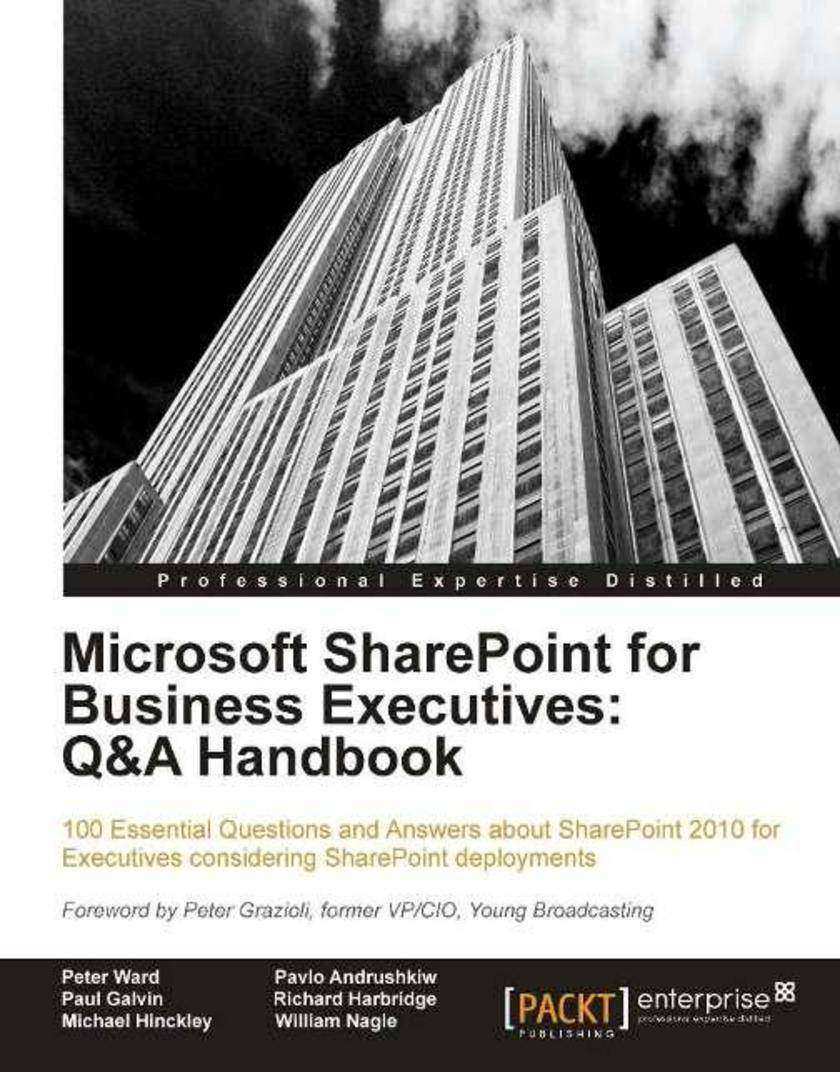
Microsoft SharePoint for Business Executives: Q&A Handbook
¥71.93
“Microsoft SharePoint for Business Executives: Q&A Handbook” is a quick, non-technical reference for business executives who need to get up to speed with SharePoint and understand how to make the right decision about implementations. With an easy to absorb Q&A approach and short bite size chapters focused on defined SharePoint subjects, the book follows specific SharePoint situations drawn from real world experience, enabling you to learn from anecdotes and case studies along the way. “Microsoft SharePoint for Business Executives: Q&A Handbook” is the perfect companion for business executives or non-technical team leaders who don’t want to trawl through a detailed, hands-on functionality guide to get up to speed with SharePoint. If you simply need to understand important implementation decisions or have the confidence to challenge your technical team on an approach, this book will prepare you to ask the right questions and make the right decisions. No prior knowledge of SharePoint is required.
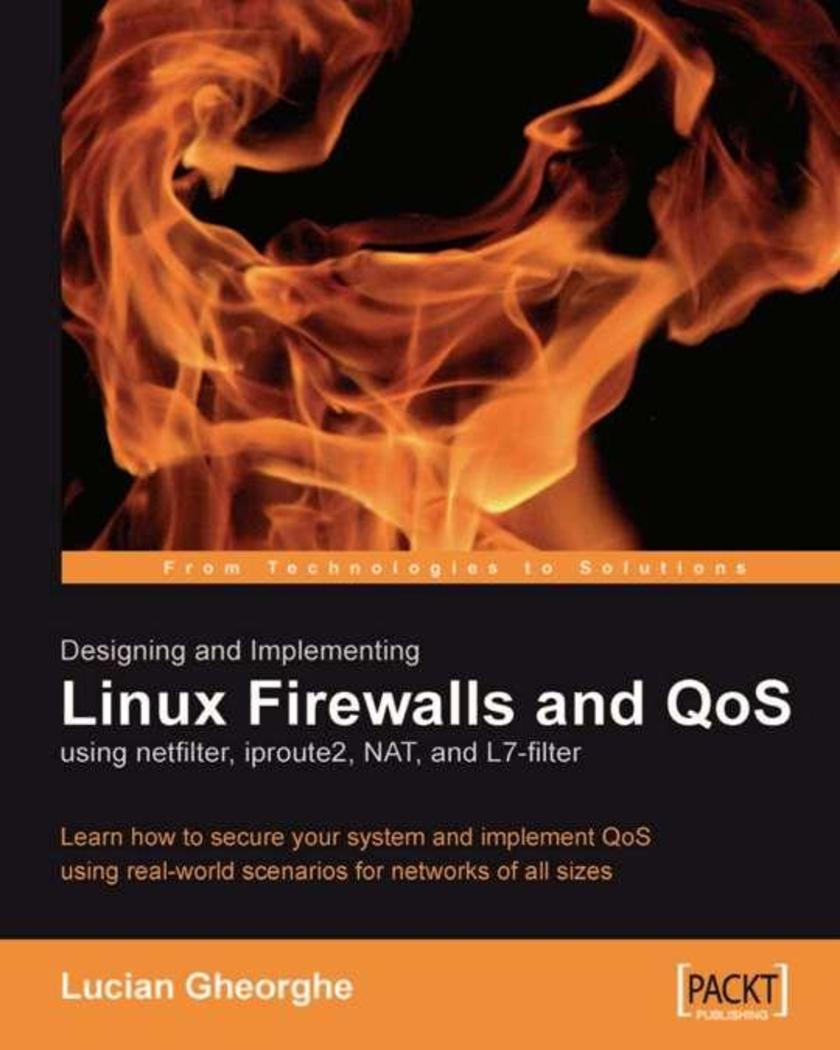
Designing and Implementing Linux Firewalls and QoS using netfilter…
¥71.93
The author draws on his experience to offer the reader valuable advice on the best practices. Providing only necessary theoretical background, the book takes a practical approach, presenting case studies and plenty of illustrative examples. This book is aimed at Linux Network administrators with some understanding of Linux security threats and issues, or any one interested in securing their systems behind a firewall. Basic knowledge of Linux is presumed but other than that this book shows you how to do the rest, from configuring your system to dealing with security breaches.

Building Websites with VB.NET and DotNetNuke 4
¥71.93
You can use this book to help you set up and administer a DotNetNuke portal, even if you have a limited knowledge of ASP.NET. You will learn how to setup and administer an example site, stepping through all the tasks to ease your learning. If you are a developer, this book will help you extend the DotNetNuke portal by first helping you understand how the core framework works and then show you how to create custom modules and skins. A rudimentary knowledge of VB.NET programming is assumed, but the emphasis is not on becoming a better VB.NET programmer but on taming DotNetNuke. This book has been written for both the beginner wanting to set up a website and also ASP.NET developers with a grasp of VB.NET who want a deeper understanding of how to work with DotNetNuke. To work with the DotNetNuke code, you will need access to Visual Web Developer Express or Visual Studio .NET 2005. No prior knowledge of DotNetNuke is assumed.
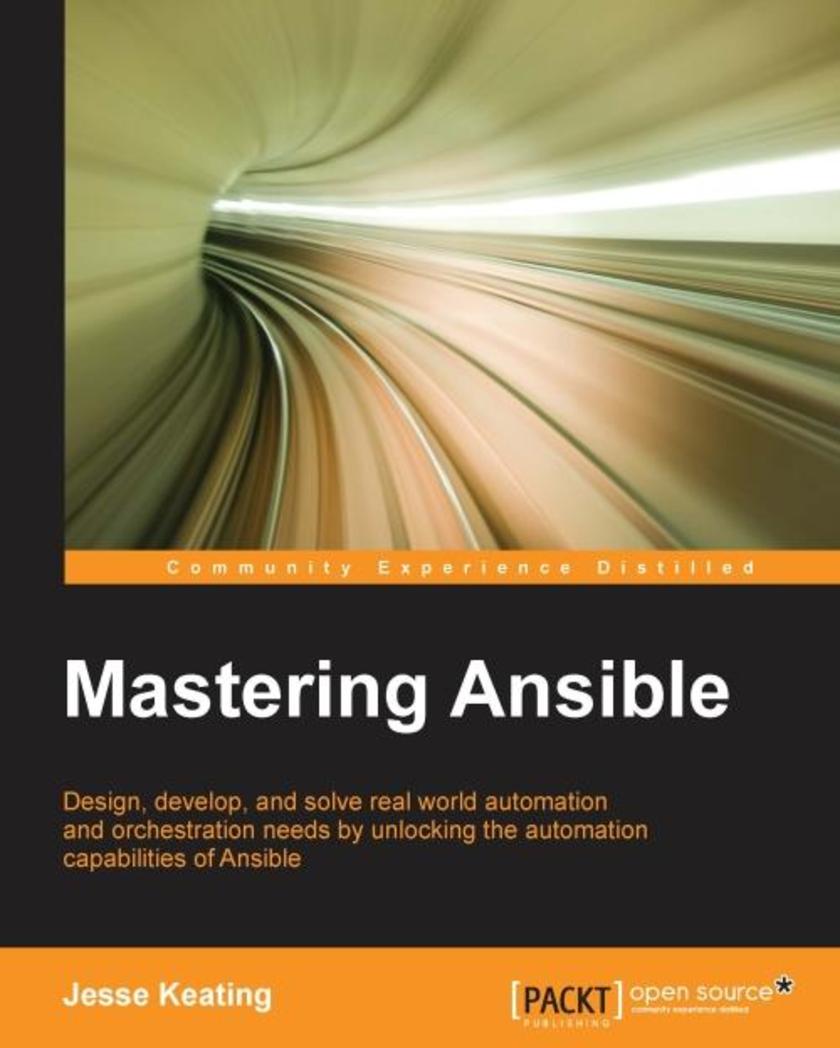
Mastering Ansible
¥71.93
Design, develop, and solve real world automation and orchestration needs by unlocking the automation capabilities of Ansible About This Book Discover how Ansible works in detail Explore use cases for Ansible’s advanced features including task delegation, fast failures, and serial task execution Extend Ansible with custom modules, plugins, and inventory sources Who This Book Is For This book is intended for Ansible developers and operators who have an understanding of the core elements and applications but are now looking to enhance their skills in applying automation using Ansible. What You Will Learn Understand Ansible’s code and logic flow Safeguard sensitive data within Ansible Access and manipulate complex variable data within Ansible playbooks Handle task results to manipulate change and failure definitions Organize Ansible content into a simple structure Craft a multi-tier rollout playbook utilizing load balancers and manipulating your monitoring system Utilize advanced Ansible features to orchestrate rolling updates with almost no service disruptions Troubleshoot Ansible failures to understand and resolve issues Extend Ansible with custom modules, plugins, or inventory sources In Detail Automation is critical to success in the world of DevOps. How quickly and efficiently an application deployment can be automated, or a new infrastructure can be built up, can be the difference between a successful product or a failure. Ansible provides a simple yet powerful automation engine. Beyond the basics of Ansible lie a host of advanced features which are available to help you increase efficiency and accomplish complex orchestrations with ease. This book provides you with the knowledge you need to understand how Ansible works at a fundamental level and leverage its advanced capabilities. You'll learn how to encrypt Ansible content at rest and decrypt data at runtime. You will master the advanced features and capabilities required to tackle the complex automation challenges of today and beyond. You will gain detailed knowledge of Ansible workflows, explore use cases for advanced features, craft well thought out orchestrations, troubleshoot unexpected behaviour, and extend Ansible through customizations. Finally, you will discover the methods used to examine and debug Ansible operations, helping you to understand and resolve issues. Style and approach A clear, practical guide that covers best practise, system architecture and design aspects that will help you master Ansible with ease.
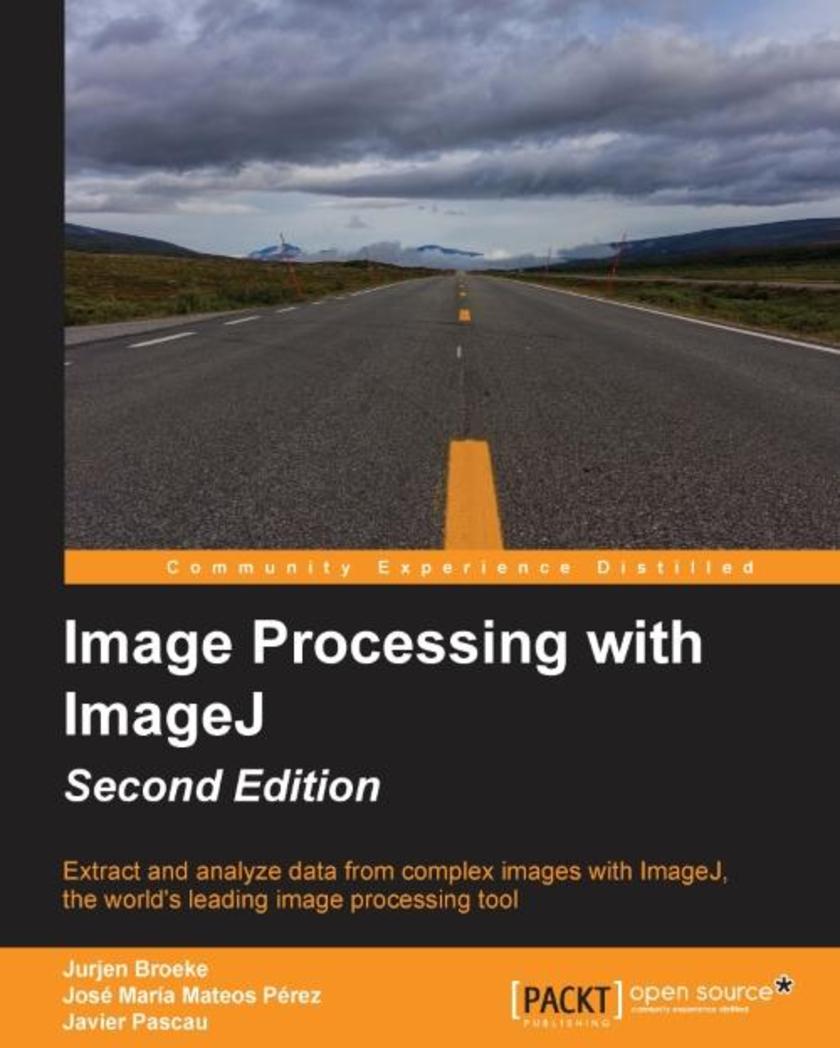
Image Processing with ImageJ - Second Edition
¥71.93
Extract and analyze data from complex images with ImageJ, the world’s leading image processing tool About This Book Design automated image-processing solutions and speed up image-processing tasks with ImageJ Create quality and intuitive interfaces for image processing by developing a basic framework for ImageJ plugins. Tackle even the most sophisticated datasets and complex images Who This Book Is For The book has been created for engineers, scientists, and developers eager to tackle image processing with one of the leading tools available. No prior knowledge of ImageJ is needed. Familiarity with Java programming will be required for readers to code their own routines using ImageJ. What You Will Learn Install and set up ImageJ for image processing. Process images using ImageJ’s built-in tools Create macros to perform repetitive processing tasks Set up and use an integrated development environment for ImageJ plugins Create plugins with a user-friendly interface for processing Use established ImageJ plugins for processing and quantification Generate a simple interface based on a real world example and create other interfaces for other projects Speed up interface development by setting multiple parameters interactively In Detail Advances in image processing have been vital for the scientific and technological communities, making it possible to analyze images in greater detail than ever before. But as images become larger and more complex, advanced processing techniques are required. ImageJ is built for the modern challenges of image processing – it’s one of the key tools in its development, letting you automate basic tasks so you can focus on sophisticated, in depth analysis. This book demonstrates how to put ImageJ into practice. It outlines its key features and demonstrates how to create your own image processing applications using macros and ImageJ plugins. Once you’ve got to grips with the basics of ImageJ, you’ll then discover how to build a number of different image processing solutions. From simple tasks to advanced and automated image processing, you’ll gain confidence with this innovative and powerful tool – however and whatever you are using it for. Style and approach A step-by-step guide to image processing and developing macros and plugins in ImageJ. The book will progress from using the built-in tools to macros and finally plugins for image processing.
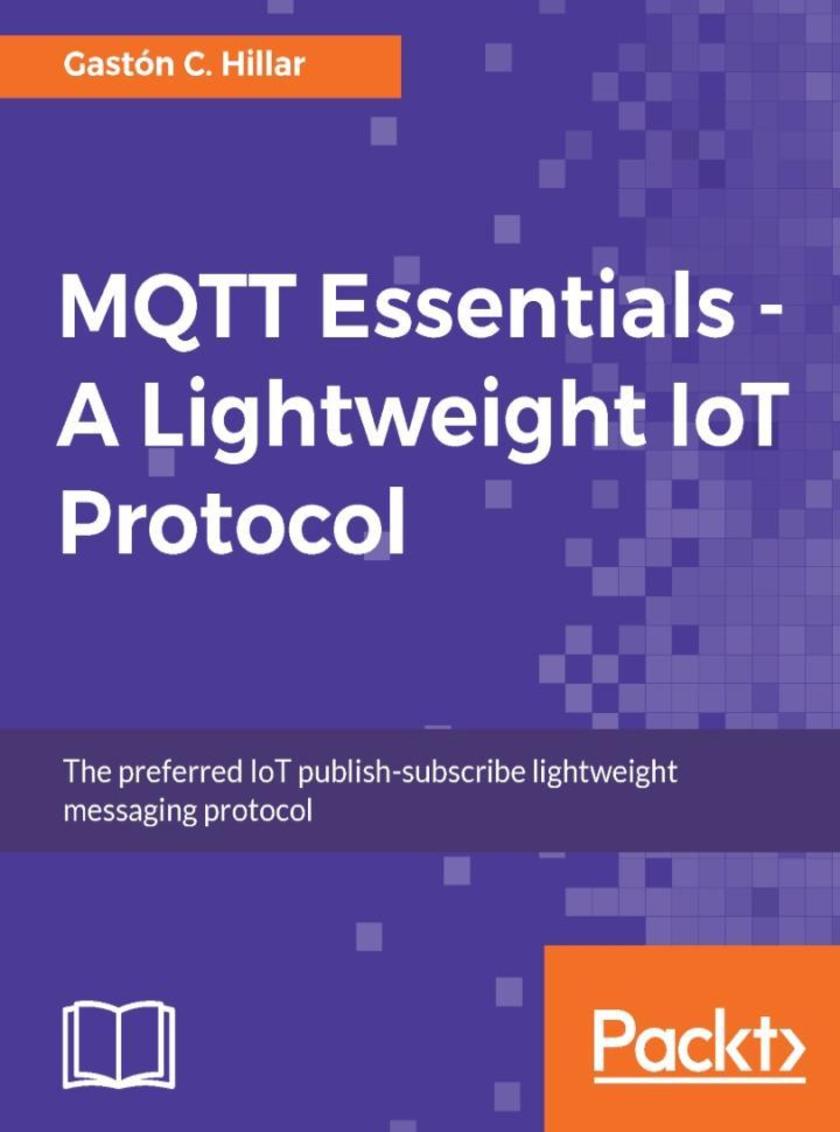
MQTT Essentials - A Lightweight IoT Protocol
¥71.93
This step-by-step guide will help you gain a deep understanding of the lightweight MQTT protocol. We’ll begin with the specific vocabulary of MQTT and its working modes, followed by installing a Mosquitto MQTT broker. Then, you will use best practices to secure the MQTT Mosquitto broker to ensure that only authorized clients are able to publish and receive messages. Once you have secured the broker with the appropriate configuration, you will develop a solution that controls a drone with Python. Further on, you will use Python on a Raspberry Pi 3 board to process commands and Python on Intel Boards (Joule, Edison and Galileo). You will then connect to the MQTT broker, subscribe to topics, send messages, and receive messages in Python. You will also develop a solution that interacts with sensors in Java by working with MQTT messages. Moving forward, you will work with an asynchronous API with callbacks to make the sensors interact with MQTT messages. Following the same process, you will develop an iOS app with Swift 3, build a website that uses WebSockets to connect to the MQTT broker, and control home automation devices with HTML5, JavaScript code, Node.js and MQTT messages What you will learn ?Understand how MQTTv3.1 and v3.1.1 works in detail ?Install and secure a Mosquitto MQTT broker by following best practices ?Design and develop IoT solutions combined with mobile and web apps that use MQTT messages to communicate ?Explore the features included in MQTT for IoT and Machine-to-Machine communications ?Publish and receive MQTT messages with Python, Java, Swift, JavaScript, and Node.js ?Implement the security best practices while setting up the MQTT Mosquitto broker
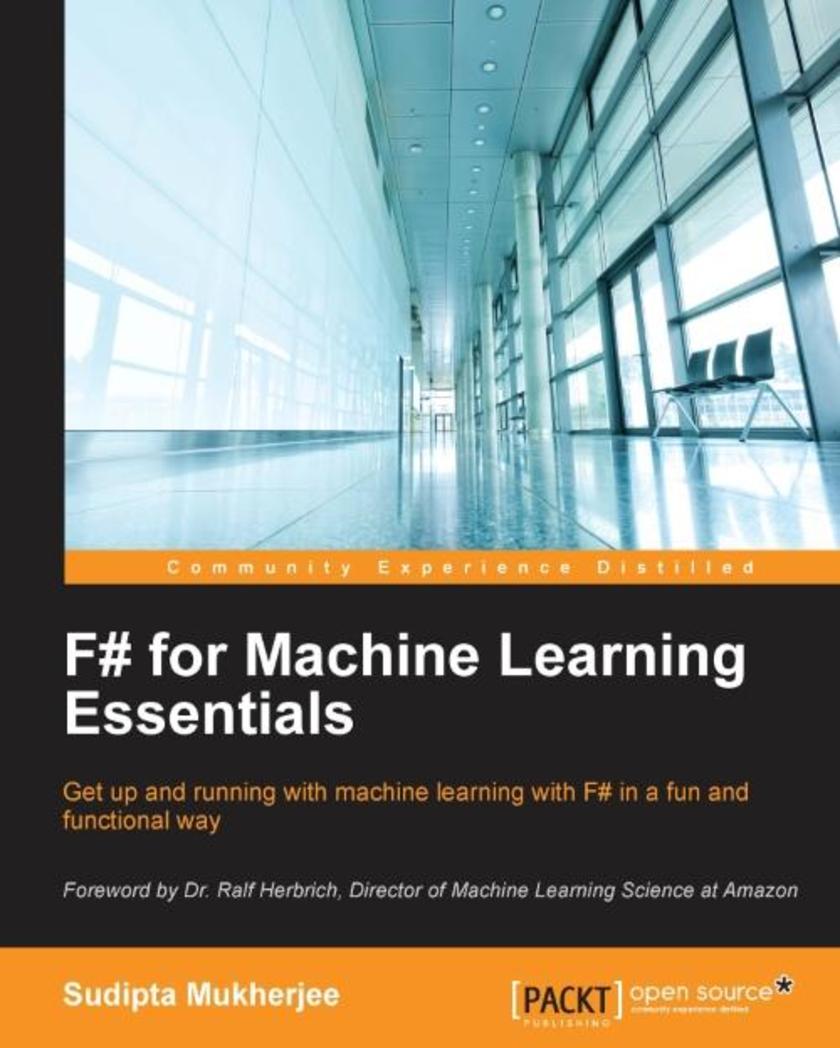
F# for Machine Learning Essentials
¥71.93
Get up and running with machine learning with F# in a fun and functional wayAbout This BookDesign algorithms in F# to tackle complex computing problemsBe a proficient F# data scientist using this simple-to-follow guideSolve real-world, data-related problems with robust statistical models, built for a range of datasetsWho This Book Is ForIf you are a C# or an F# developer who now wants to explore the area of machine learning, then this book is for you. Familiarity with theoretical concepts and notation of mathematics and statistics would be an added advantage.What You Will LearnUse F# to find patterns through raw dataBuild a set of classification systems using Accord.NET, Weka, and F#Run machine learning jobs on the Cloud with MBracePerform mathematical operations on matrices and vectors using Math.NETUse a recommender system for your own problem domainIdentify tourist spots across the globe using inputs from the user with decision tree algorithmsIn DetailThe F# functional programming language enables developers to write simple code to solve complex problems. With F#, developers create consistent and predictable programs that are easier to test and reuse, simpler to parallelize, and are less prone to bugs.If you want to learn how to use F# to build machine learning systems, then this is the book you want.Starting with an introduction to the several categories on machine learning, you will quickly learn to implement time-tested, supervised learning algorithms. You will gradually move on to solving problems on predicting housing pricing using Regression Analysis. You will then learn to use Accord.NET to implement SVM techniques and clustering. You will also learn to build a recommender system for your e-commerce site from scratch. Finally, you will dive into advanced topics such as implementing neural network algorithms while performing sentiment analysis on your data.Style and approachThis book is a fast-paced tutorial guide that uses hands-on examples to explain real-world applications of machine learning. Using practical examples, the book will explore several machine learning techniques and also describe how you can use F# to build machine learning systems.
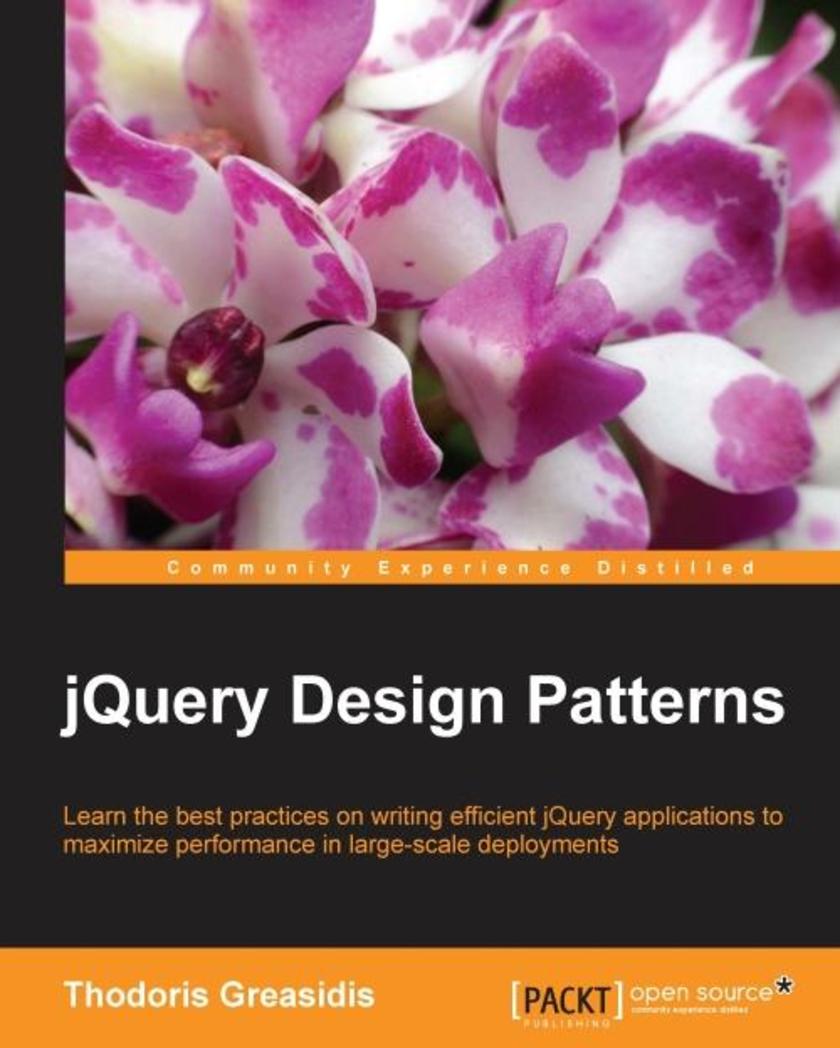
jQuery Design Patterns
¥71.93
Learn the best practices on writing efficient jQuery applications to maximize performance in large-scale deploymentsAbout This BookLearn about the observer pattern and the deferred observer pattern, two of the most popular design patterns that handle custom eventsAdvance your jQuery skills by learning about patterns such as divide and conquer, facade, and builder and factory to handle complex resultsThis step-by-step guide to applying micro-patterns and optimizing jQuery applications will help you get the best performance in a production environmentWho This Book Is ForThis book is for existing jQuery Developers or new developers who want to get an understanding of the “correct way” to build jQuery applications, using best practices and industry standard patterns.What You Will LearnRespond to user actionsAchieve greater flexibility and code decouplingHave a central point for emitting and receiving application level eventsStructure the application into small independent modulesAbstract complex APIsIsolate the procedure of generating complex parts of the applicationEfficiently orchestrate asynchronous procedures using jQuery Deferred and PromisesUtilize the most widely-used client-side templating libraries for more complex use casesIn DetailjQuery is a feature-rich JavaScript library that makes HTML document traversal and manipulation, event handling, animation, and Ajax much simpler with an easy-to-use API that works across a variety of browsers. With a combination of versatility and extensibility, jQuery has changed the way that millions of people write JavaScript.jQuery solves the problems of DOM manipulation, event detection, AJAX calls, element selection and document queries, element attribute and data management, as well as object management utilities. This book addresses these problems and shows you how to make the best of jQuery through the various design patterns available.The book starts off with a refresher to jQuery and will then take you through the different design patterns such as facade, observer, publisher/subscriber, and so on. We will also go into client-side templating techniques and libraries, as well as some plugin development patterns. Finally, we will look into some best practices that you can use to make the best of jQuery.Style and approachThe example-oriented guide covers the best and most widely used patterns to help you improve your development with jQuery.
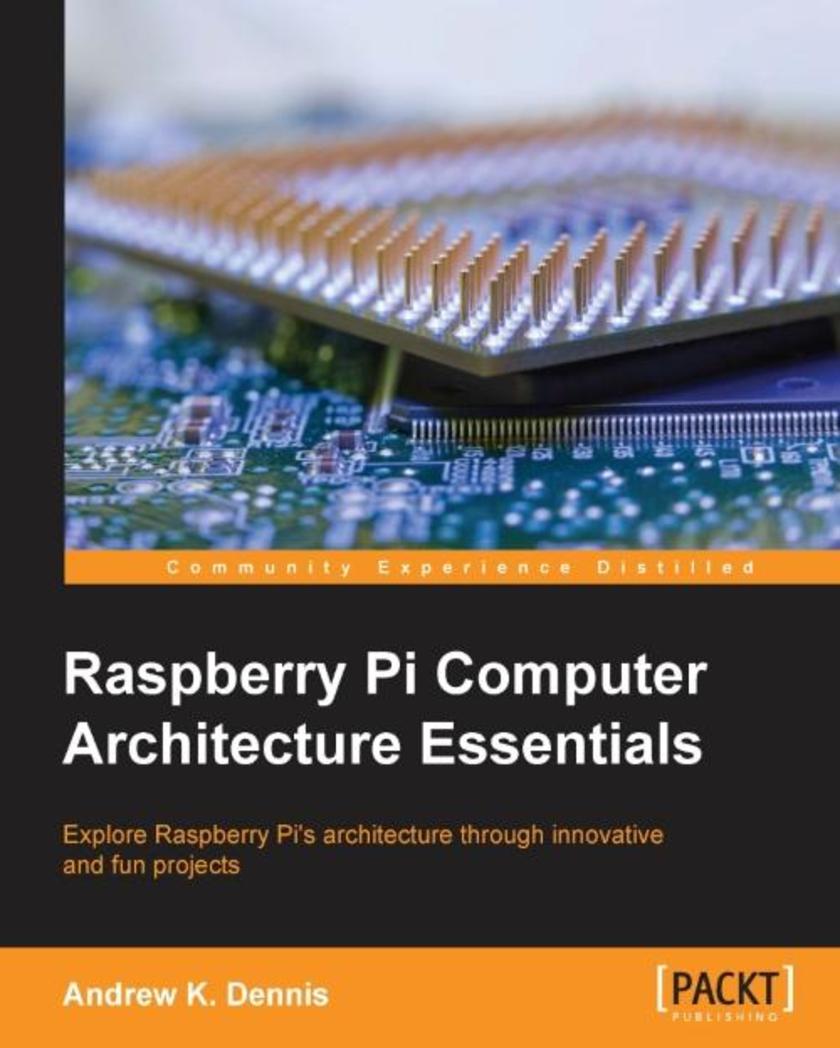
Raspberry Pi Computer Architecture Essentials
¥71.93
Explore Raspberry Pi's architecture through innovative and fun projects About This Book Explore Raspberry Pi 2’s hardware through the Assembly, C/C++, and Python programming languages Experiment with connecting electronics up to your Raspberry Pi 2 and interacting with them through software Learn about the Raspberry Pi 2 architecture and Raspbian operating system through innovative projects Who This Book Is For Raspberry Pi Computer Architecture Essentials is for those who are new and those who are familiar with the Raspberry Pi. Each topic builds upon earlier ones to provide you with a guide to Raspberry Pi’s architecture. From the novice to the expert, there is something for everyone. A basic knowledge of programming and Linux would be helpful but is not required. What You Will Learn Set up your Raspberry Pi 2 and learn about its hardware Write basic programs in Assembly Language to learn about the ARM architecture Use C and C++ to interact with electronic components Find out about the Python language and how to use it to build web applications Interact with third-party microcontrollers Experiment with graphics and audio programming Expand Raspberry Pi 2’s storage mechanism by using external devices Discover Raspberry Pi 2’s GPIO pins and how to interact with them In Detail With the release of the Raspberry Pi 2, a new series of the popular compact computer is available for you to build cheap, exciting projects and learn about programming. In this book, we explore Raspberry Pi 2’s hardware through a number of projects in a variety of programming languages. We will start by exploring the various hardware components in detail, which will provide a base for the programming projects and guide you through setting up the tools for Assembler, C/C++, and Python. We will then learn how to write multi-threaded applications and Raspberry Pi 2’s multi-core processor. Moving on, you’ll get hands on by expanding the storage options of the Raspberry Pi beyond the SD card and interacting with the graphics hardware. Furthermore, you will be introduced to the basics of sound programming while expanding upon your knowledge of Python to build a web server. Finally, you will learn to interact with the third-party microcontrollers. From writing your first Assembly Language application to programming graphics, this title guides you through the essentials. Style and approach This book takes a step-by-step approach to exploring Raspberry Pi’s architecture through projects that build upon each other. Each project provides you with new information on how to interact with an aspect of the Raspberry Pi and Raspbian operating system, providing a well-rounded guide.
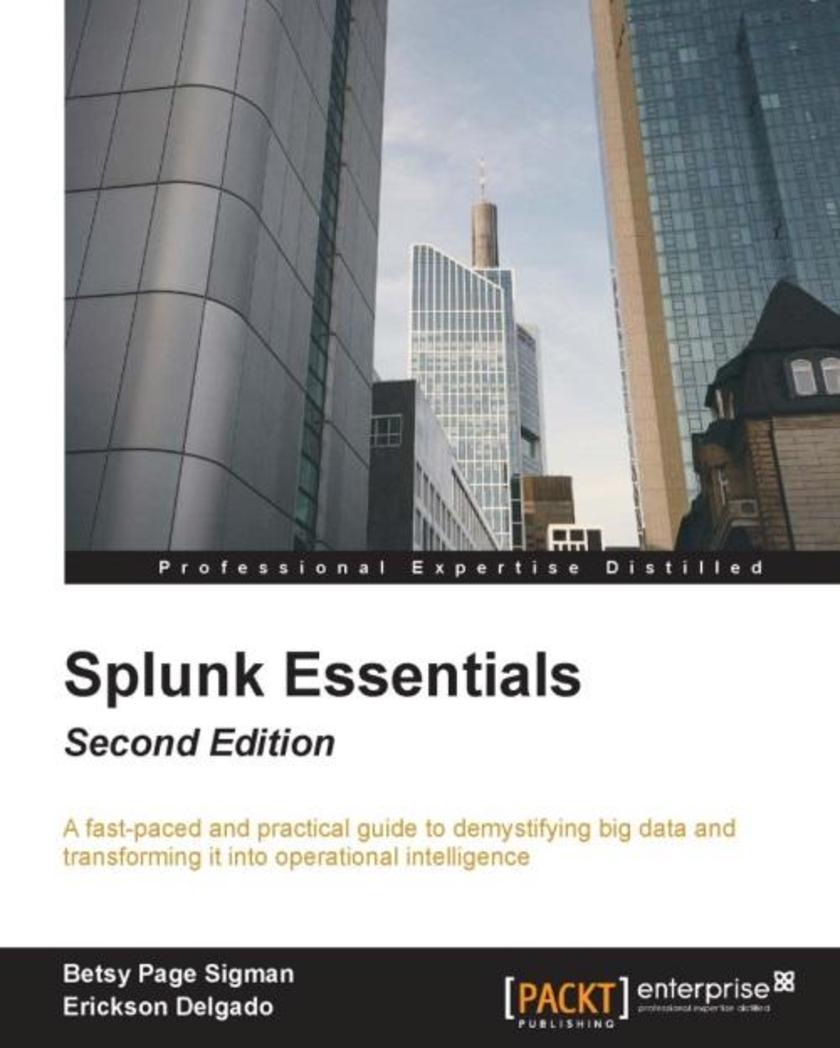
Splunk Essentials - Second Edition
¥71.93
A fast-paced and practical guide to demystifying big data and transforming it into operational intelligence About This Book Want to get started with Splunk to analyze and visualize machine dataOpen this book and step into the world of Splunk. Leverage the exceptional analysis and visualization capabilities to make informed decisions for your business This easy-to-follow, practical book can be used by anyone, even if you have never managed any data before Who This Book Is For This book will be perfect for you if you are a Software engineer or developer or System administrators or Business analyst who seek to correlate machine data with business metrics and provide intuitive real-time and statistical visualizations. Some knowledge or experience of previous versions of Splunk will be helpful but not essential. What You Will Learn Install and configure Splunk Gather data from different sources, isolate them by indexes, classify them into source types, and tag them with the essential fields Be comfortable with the Search Processing Language and get to know the best practices in writing search queries Create stunning and powerful dashboards Be proactive by implementing alerts and scheduled reports Use the Splunk SDK and integrate Splunk data into other applications Implement the best practices in using Splunk. In Detail Splunk is a search, analysis, and reporting platform for machine data, which has a high adoption on the market. More and more organizations want to adopt Splunk to use their data to make informed decisions. This book is for anyone who wants to manage data with Splunk. You’ll start with very basics of Splunk— installing Splunk—and then move on to searching machine data with Splunk. You will gather data from different sources, isolate them by indexes, classify them into source types, and tag them with the essential fields. After this, you will learn to create various reports, XML forms, and alerts. You will then continue using the Pivot Model to transform the data models into visualization. You will also explore visualization with D3 in Splunk. Finally you’ll be provided with some real-world best practices in using Splunk. Style and approach This fast-paced, example-rich guide will help you analyze and visualize machine data with Splunk through simple, practical instructions.
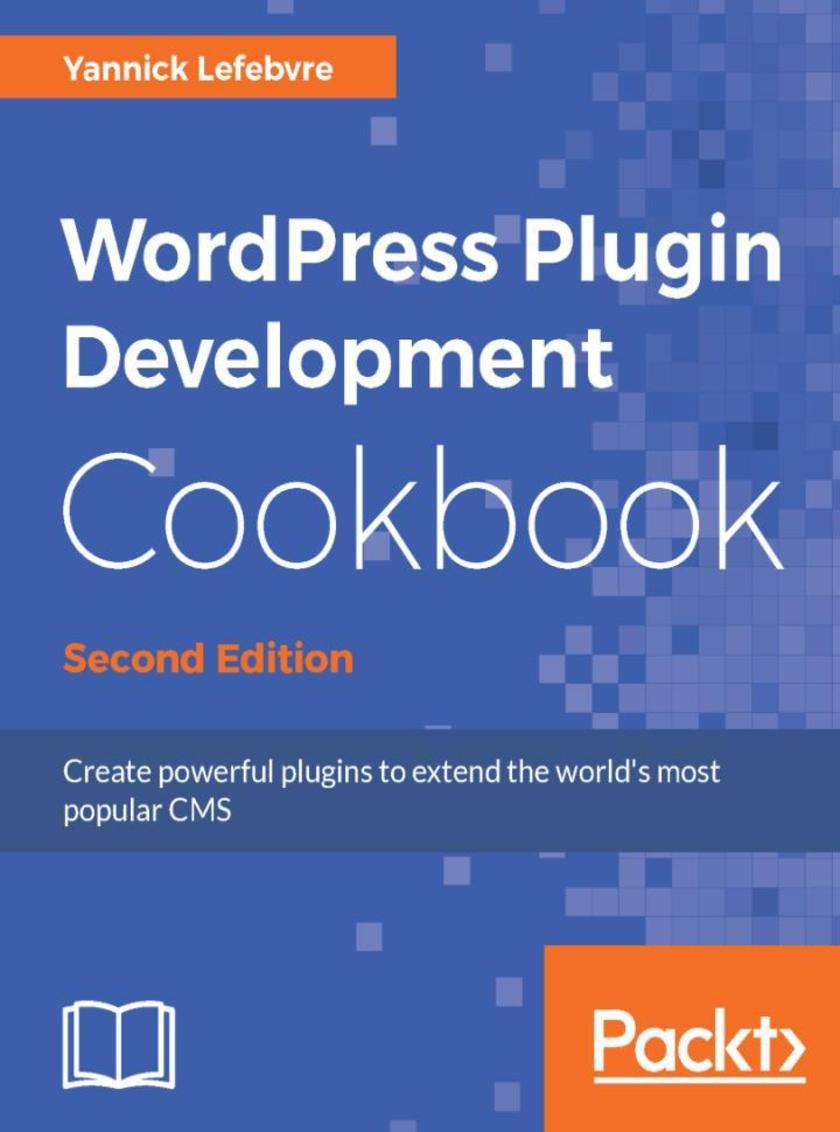
WordPress Plugin Development Cookbook - Second Edition
¥71.93
Learn to create plugins for WordPress 4.x to deliver custom projects or share with the community through detailed step-by-step recipes and code examples About This Book ? Learn how to change and extend WordPress to perform virtually any task ? Explore the plugin API through approachable examples and detailed explanations ? Mold WordPress to your project’s needs or transform it to benefit the entire community Who This Book Is For If you are a WordPress user, developer, or a site integrator with basic knowledge of PHP and an interest to create new plugins to address your personal needs, client needs, or share with the community, then this book is for you. What You Will Learn ? Discover how to register user callbacks with WordPress, forming the basis of plugin creation ? Explore the creation of administration pages and adding new content management sections through custom post types and custom database tables ? Improve your plugins by customizing the post and page editors, categories and user profiles, and creating visitor-facing forms ? Make your pages dynamic using Java*, AJAX and adding new widgets to the platform ? Learn how to add support for plugin translation and distribute your work to the WordPress community In Detail WordPress is a popular, powerful, and open Content Management System. Learning how to extend its capabilities allows you to unleash its full potential, whether you're an administrator trying to find the right extension, a developer with a great idea to enhance the platform for the community, or a website developer working to fulfill a client's needs. This book shows readers how to navigate WordPress' vast set of API functions to create high-quality plugins with easy-to-configure administration interfaces. With new recipes and materials updated for the latest versions of WordPress 4.x, this second edition teaches you how to create plugins of varying complexity ranging from a few lines of code to complex extensions that provide intricate new capabilities. You'll start by using the basic mechanisms provided in WordPress to create plugins and execute custom user code. You will then see how to design administration panels, enhance the post editor with custom fields, store custom data, and modify site behavior based on the value of custom fields. You'll safely incorporate dynamic elements on web pages using *ing languages, and build new widgets that users will be able to add to WordPress sidebars and widget areas. By the end of this book, you will be able to create WordPress plugins to perform any task you can imagine. Style and approach This cookbook will take you through the creation of your first simple plugin to adding entirely new sections and widgets in the administration interface, so you can learn how to change and extend WordPress to perform virtually any task. Each topic is illustrated through realistic examples showing how to solve common problems, followed by detailed explanations of all concepts used
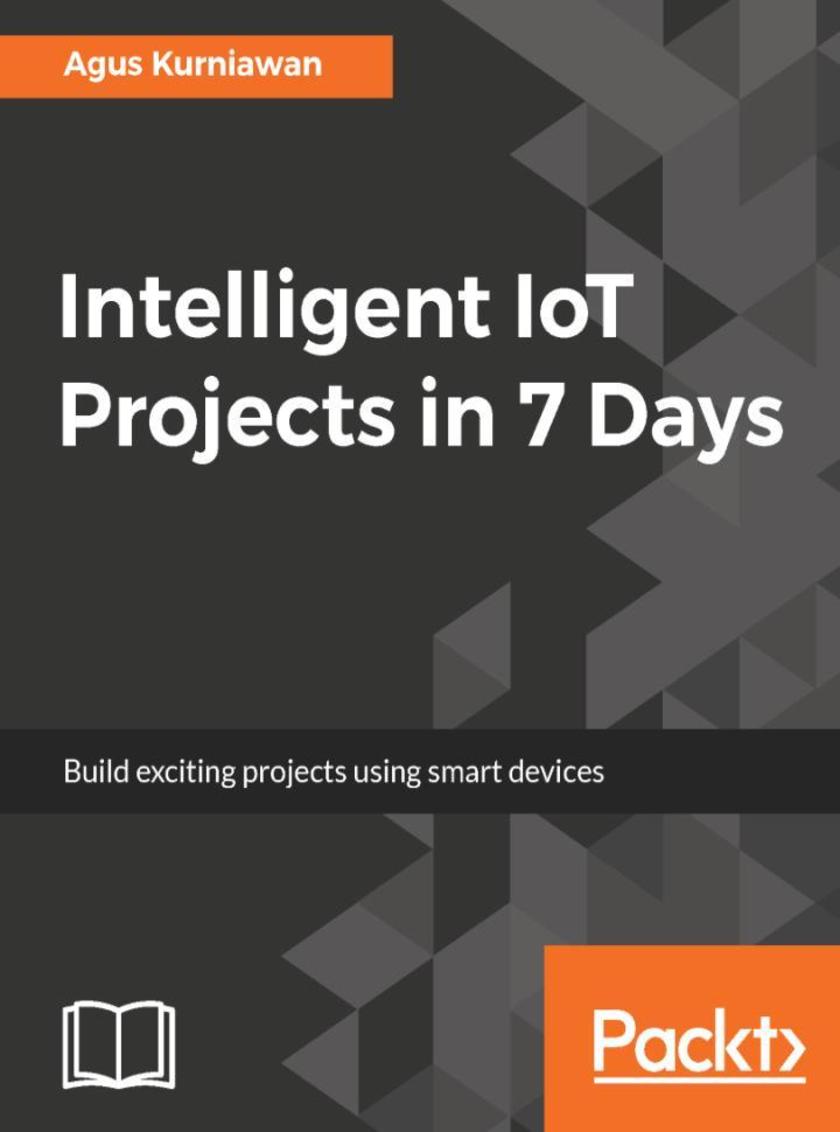
Intelligent IoT Projects in 7 Days
¥71.93
Discover how to build your own Intelligent Internet of Things projects and bring a new degree of interconnectivity to your world. About This Book ? Build intelligent and unusual IoT projects in just 7 days, ? Create home automation, smart home, and robotic projects and allow your devices to do smart work ? Build IoT skills through enticing projects and leverage revolutionary computing hardware through the RPi and Arduino. Who This Book Is For If you're a developer, IoT enthusiast, or just someone curious about Internet of Things, then this book is for you. A basic understanding of electronic hardware, networking, and basic programming skills would do wonders. What You Will Learn ? Learn how to get started with intelligent IoT projects ? Explore various pattern recognition and machine learning algorithms to make IoT projects smarter. ? Make decisions on which devices to use based on the kind of project to build. ? Create a simple machine learning application and implement decision system concepts ? Build a smart parking system using Arduino and Raspberry Pi ? Learn how to work with Amazon Echo and to build your own smart speaker machine ? Build multi-robot cooperation using swarm intelligence. In Detail Intelligent IoT Projects in 7 days is about creating smart IoT projects in just 7 days. This book will help you to overcome the challenge of analyzing data from physical devices. This book aims to help you put together some of the most exciting IoT projects in a short span of time. You'll be able to use these in achieving or automating everyday tasks—one project per day. We will start with a simple smart gardening system and move on to a smart parking system, and then we will make our own vending machine, a smart digital advertising dashboard, a smart speaker machine, an autonomous fire fighter robot, and finally look at a multi-robot cooperation using swarm intelligence Style and approach A clear step-by-step instruction guide to completing fully-fledged projects in just 7 days
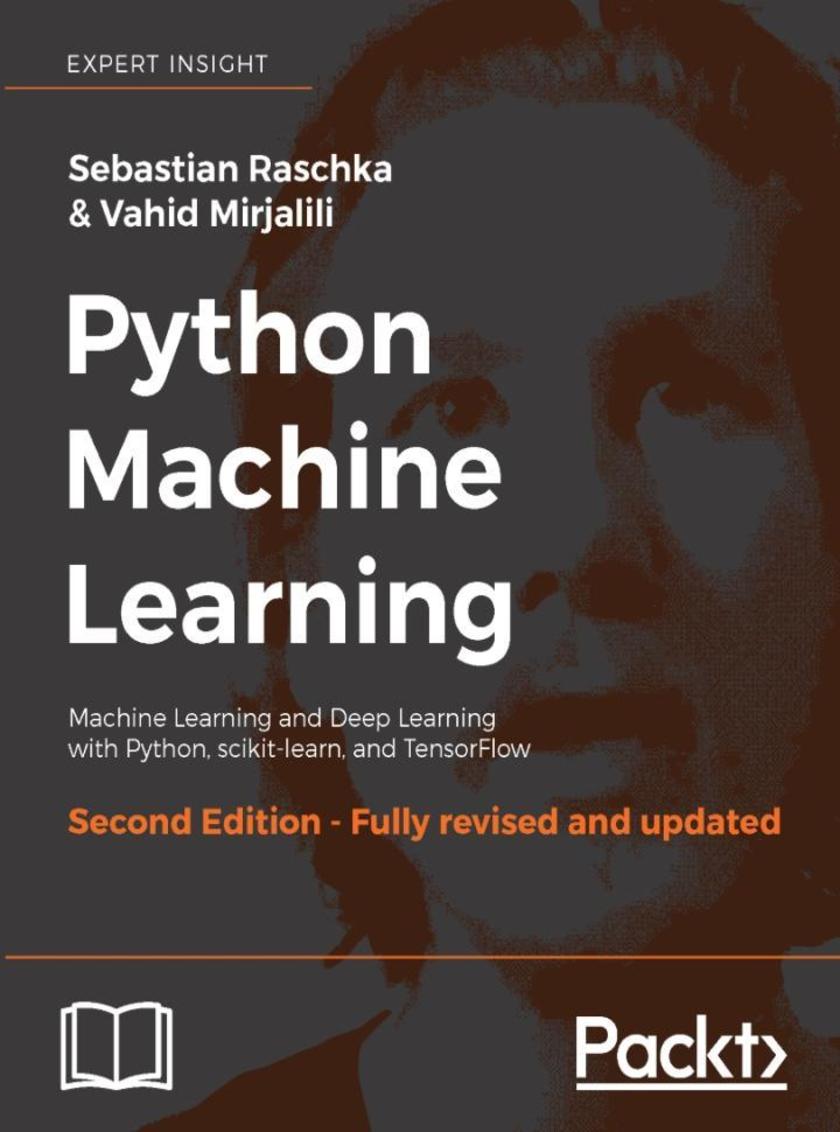
Python Machine Learning - Second Edition
¥71.93
Unlock modern machine learning and deep learning techniques with Python by using the latest cutting-edge open source Python libraries. About This Book ? Second edition of the bestselling book on Machine Learning ? A practical approach to key frameworks in data science, machine learning, and deep learning ? Use the most powerful Python libraries to implement machine learning and deep learning ? Get to know the best practices to improve and optimize your machine learning systems and algorithms Who This Book Is For If you know some Python and you want to use machine learning and deep learning, pick up this book. Whether you want to start from scratch or extend your machine learning knowledge, this is an essential and unmissable resource. Written for developers and data scientists who want to create practical machine learning and deep learning code, this book is ideal for developers and data scientists who want to teach computers how to learn from data. What You Will Learn ? Understand the key frameworks in data science, machine learning, and deep learning ? Harness the power of the latest Python open source libraries in machine learning ? Explore machine learning techniques using challenging real-world data ? Master deep neural network implementation using the TensorFlow library ? Learn the mechanics of classification algorithms to implement the best tool for the job ? Predict continuous target outcomes using regression analysis ? Uncover hidden patterns and structures in data with clustering ? Delve deeper into textual and social media data using sentiment analysis In Detail Machine learning is eating the software world, and now deep learning is extending machine learning. Understand and work at the cutting edge of machine learning, neural networks, and deep learning with this second edition of Sebastian Raschka’s bestselling book, Python Machine Learning. Thoroughly updated using the latest Python open source libraries, this book offers the practical knowledge and techniques you need to create and contribute to machine learning, deep learning, and modern data analysis. Fully extended and modernized, Python Machine Learning Second Edition now includes the popular TensorFlow deep learning library. The scikit-learn code has also been fully updated to include recent improvements and additions to this versatile machine learning library. Sebastian Raschka and Vahid Mirjalili’s unique insight and expertise introduce you to machine learning and deep learning algorithms from scratch, and show you how to apply them to practical industry challenges using realistic and interesting examples. By the end of the book, you’ll be ready to meet the new data analysis opportunities in today’s world. If you’ve read the first edition of this book, you’ll be delighted to find a new balance of classical ideas and modern insights into machine learning. Every chapter has been critically updated, and there are new chapters on key technologies. You’ll be able to learn and work with TensorFlow more deeply than ever before, and get essential coverage of the Keras neural network library, along with the most recent updates to scikit-learn. Style and Approach Python Machine Learning Second Edition takes a practical, hands-on coding approach so you can learn about machine learning by coding with Python. This book moves fluently between the theoretical principles of machine learning and the practical details of implementation with Python.
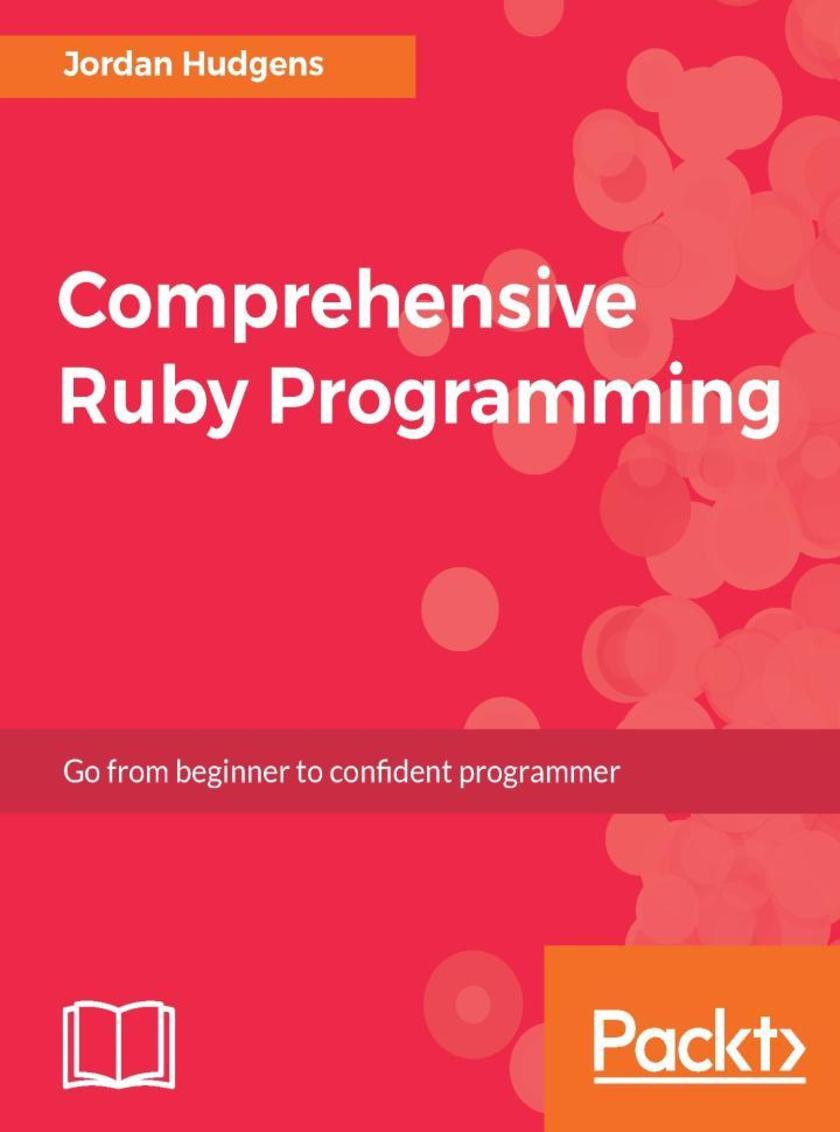
Comprehensive Ruby Programming
¥71.93
This book will provide you with all of the tools you need to be a professional Ruby developer. Starting with the core principles, such as syntax and best practices, and up to advanced topics like metaprogramming and big data analysis. About This Book ? Provides the core skills required to become a Ruby programmer ? Covers how to use the most popular Ruby Gem libraries ? Includes details on regular expressions Who This Book Is For This is a complete course written from the ground up for beginners wanting to gain a solid understanding of the Ruby language. It starts at the beginning with how to install Ruby and work with it on multiple machines, so simply have a computer that's connected to the Internet and you'll be ready. What You Will Learn ? Learn how to use Ruby code effectively, picking the right tool for the job and not duplicating built-in functionality ? Gain best software development practices, and how to identify and fix common errors ? Absorb core programming skills, such as variables, strings, loops, conditionals, and much more ? Explore object-oriented programming and learn to create modular, reusable code that you can use across projects ? Build 10 practical Ruby programs as you work through the book on topics such as big data analysis and solving Euler equations In Detail Ruby is a powerful, general-purpose programming language that can be applied to any task. Whether you are an experienced developer who wants to learn a new language or you are new to programming, this book is your comprehensive Ruby coding guide. Starting with the foundational principles, such as syntax, and scaling up to advanced topics such as big data analysis, this book will give you all of the tools you need to be a professional Ruby developer. A few of the key topics are: object-oriented programming, built-in Ruby methods, core programming skills, and an introduction to the Ruby on Rails and Sinatra web frameworks. You will also build 10 practical Ruby programs. Created by an experienced Ruby developer, this book has been written to ensure it focuses on the skills you will need to be a professional Ruby developer. After you have read this book, you will be ready to start building real-world Ruby projects. Style and approach This is a comprehensive course for learning the Ruby programming language that works methodically through everything that you need to know. It begins with the basics of the language and then works through some complete projects to apply your skills and ensure that you have fully absorbed them and can use them in the real world.
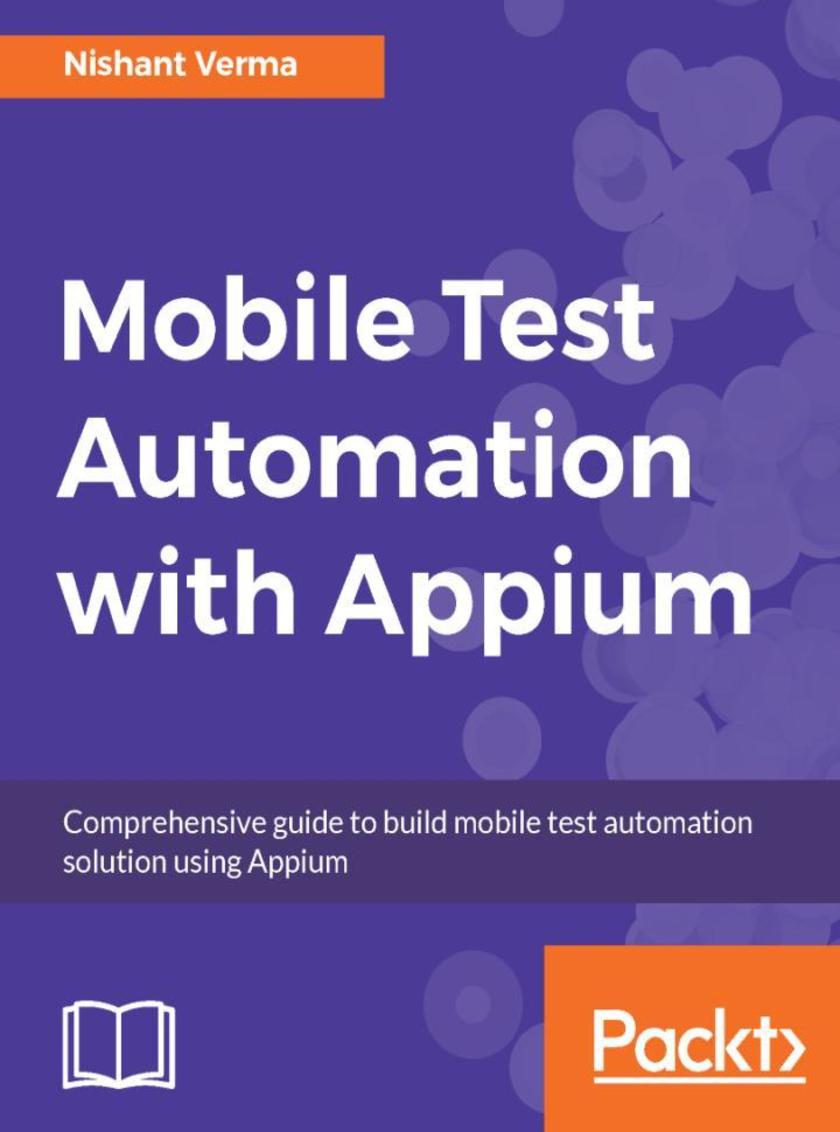
Mobile Test Automation with Appium
¥71.93
Automate your mobile app testing About This Book ? How to automate testing with Appium ? Apply techniques for creating comprehensive tests ? How to test on physical devices or emulators Who This Book Is For Are you a mobile developer or a software tester who wishes to use Appium for your test automation? If so, then this is the right book for you .You must have basic Java programming knowledge. You don’t need to have prior knowledge of Appium. What You Will Learn ? Discover Appium and how to set up an automation framework for mobile testing ? Understand desired capabilities and learn to find element locators ? Learn to automate gestures and synchronize tests using Appium ? Take an incremental approach to implement page object pattern ? Learn to run Appium tests on emulators or physical devices ? Set up Jenkins to run mobile automation tests by easy to learn steps ? Discover tips and tricks to record video of test execution, inter app automation concepts ? Learn to run Appium tests in parallel on multiple devices simultaneously In Detail Appium is an open source test automation framework for mobile applications. It allows you to test all three types of mobile applications: native, hybrid, and mobile web. It allows you to run the automated tests on actual devices, emulators, and simulators. Today, when every mobile app is made on at least two platforms, iOS and Android, you need a tool that allows you to test across platforms. Having two different frameworks for the same app increases the cost of the product and time to maintain it as well. Appium helps save this cost. With mobile app growth exploding, mobile app automation is mainstream now. In this book, author Nishant Verma provides you with a firm grounding in the concepts of Appium while diving into how to set up appium & Cucumber-jvm test automation framework, implement page object design pattern, automate gestures, test execution on emulators and physical devices, and implement continuous integration with Jenkins. The mobile app we have referenced in this book is Quikr because of its relatively lower learning curve to understand the application. It's a local classifieds shopping app. Style and approach This book takes a practical, step-by-step approach to testing and automating individual apps such as native, hybrid, and mobile web apps using different examples.
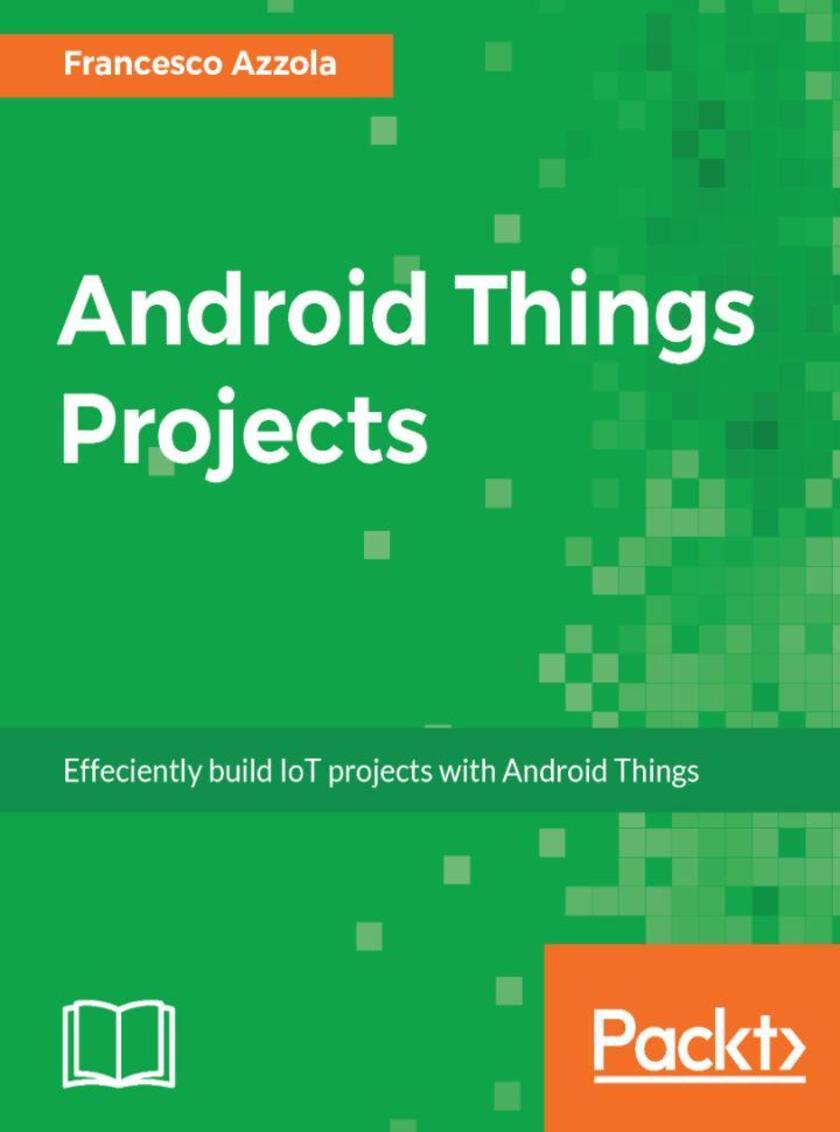
Android Things Projects
¥71.93
Develop smart Internet of things projects using Android Things. About This Book ? Learn to build promising IoT projects with Android Things ? Make the most out of hardware peripherals using standard Android APIs ? Build enticing projects on IoT, home automation, and robotics by leveraging Raspberry Pi 3 and Intel Edison Who This Book Is For This book is for Android enthusiasts, hobbyists, IoT experts, and Android developers who want to gain a deeper knowledge of Android Things. The main focus is on implementing IoT projects using Android Things. What You Will Learn ? Understand IoT ecosystem and the Android Things role ? See the Android Things framework: installation, environment, SDK, and APIs ? See how to effectively use sensors (GPIO and I2C Bus) ? Integrate Android Things with IoT cloud platforms ? Create practical IoT projects using Android Things ? Integrate Android Things with other systems using standard IoT protocols ? Use Android Things in IoT projects In Detail Android Things makes developing connected embedded devices easy by providing the same Android development tools, best-in-class Android framework, and Google APIs that make developers successful on mobile. With this book, you will be able to take advantage of the new Android framework APIs to securely build projects using low-level components such as sensors, resistors, capacitors, and display controllers. This book will teach you all you need to know about working with Android Things through practical projects based on home automation, robotics, IoT, and so on. We’ll teach you to make the most of the Android Things and build enticing projects such as a smart greenhouse that controls the climate and environment automatically. You’ll also create an alarm system, integrate Android Things with IoT cloud platforms, and more. By the end of this book, you will know everything about Android Things, and you’ll have built some very cool projects using the latest technology that is driving the adoption of IoT. You will also have primed your mindset so that you can use your knowledge for profitable, practical projects. Style and approach This book is packed with fun-filled, end-to-end projects that you will be encouraged to experiment on the Android Things OS.
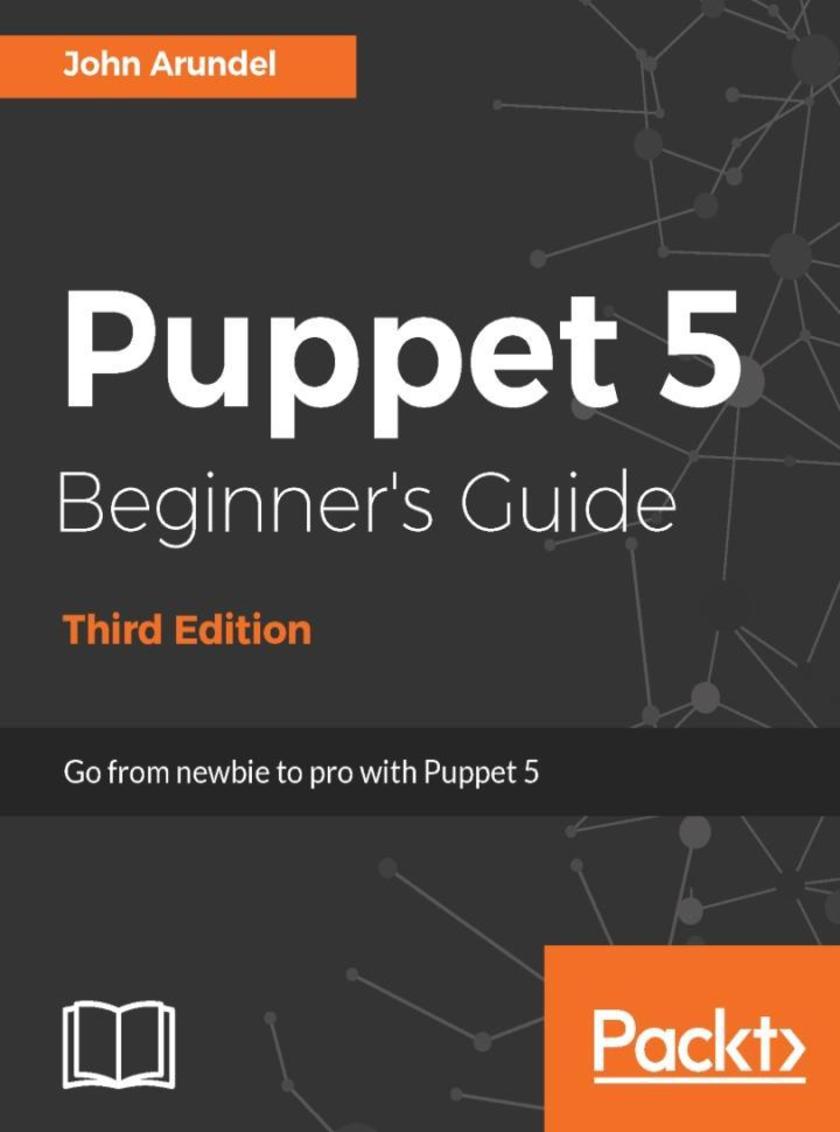
Puppet 5 Beginner's Guide - Third Edition
¥71.93
Puppet 5 Beginner’s Guide, Third Edition is a practical guide that gets you up and running with the very latest features of Puppet 5. About This Book ? Develop skills to run Puppet 5 on single or multiple servers without hiccups ? Use Puppet to create and manage cloud resources such as Amazon EC2 instances ? Take full advantage of powerful new features of Puppet including loops, data types, Hiera integration, and container management Who This Book Is For Puppet 5 Beginner’s Guide, Third Edition is designed for those who are new to Puppet, including system administrators and developers who are looking to manage computer server systems for configuration management. No prior programming or system administration experience is assumed. What You Will Learn ? Understand the latest Puppet 5 features ? Install and set up Puppet and discover the latest and most advanced features ? Configure, build, and run containers in production using Puppet’s industry-leading Docker support ? Deploy configuration files and templates at super-fast speeds and manage user accounts and access control ? Automate your IT infrastructure ? Use the latest features in Puppet 5 onward and its official modules ? Manage clouds, containers, and orchestration ? Get to know the best practices to make Puppet more reliable and increase its performance In Detail Puppet 5 Beginner’s Guide, Third Edition gets you up and running with the very latest features of Puppet 5, including Docker containers, Hiera data, and Amazon AWS cloud orchestration. Go from beginner to confident Puppet user with a series of clear, practical examples to help you manage every aspect of your server setup. Whether you’re a developer, a system administrator, or you are simply curious about Puppet, you’ll learn Puppet skills that you can put into practice right away. With practical steps giving you the key concepts you need, this book teaches you how to install packages and config files, create users, set up scheduled jobs, provision cloud instances, build containers, and so much more. Every example in this book deals with something real and practical that you’re likely to need in your work, and you’ll see the complete Puppet code that makes it happen, along with step-by-step instructions for what to type and what output you’ll see. All the examples are available in a GitHub repo for you to download and adapt for your own server setup. Style and approach This tutorial is packed with quick step-by-step instructions that are immediately applicable for beginners. This is an easy-to-read guide, to learn Puppet from scratch, that explains simply and clearly all you need to know to use this essential IT power tool, while applying these solutions to real-world scenarios.
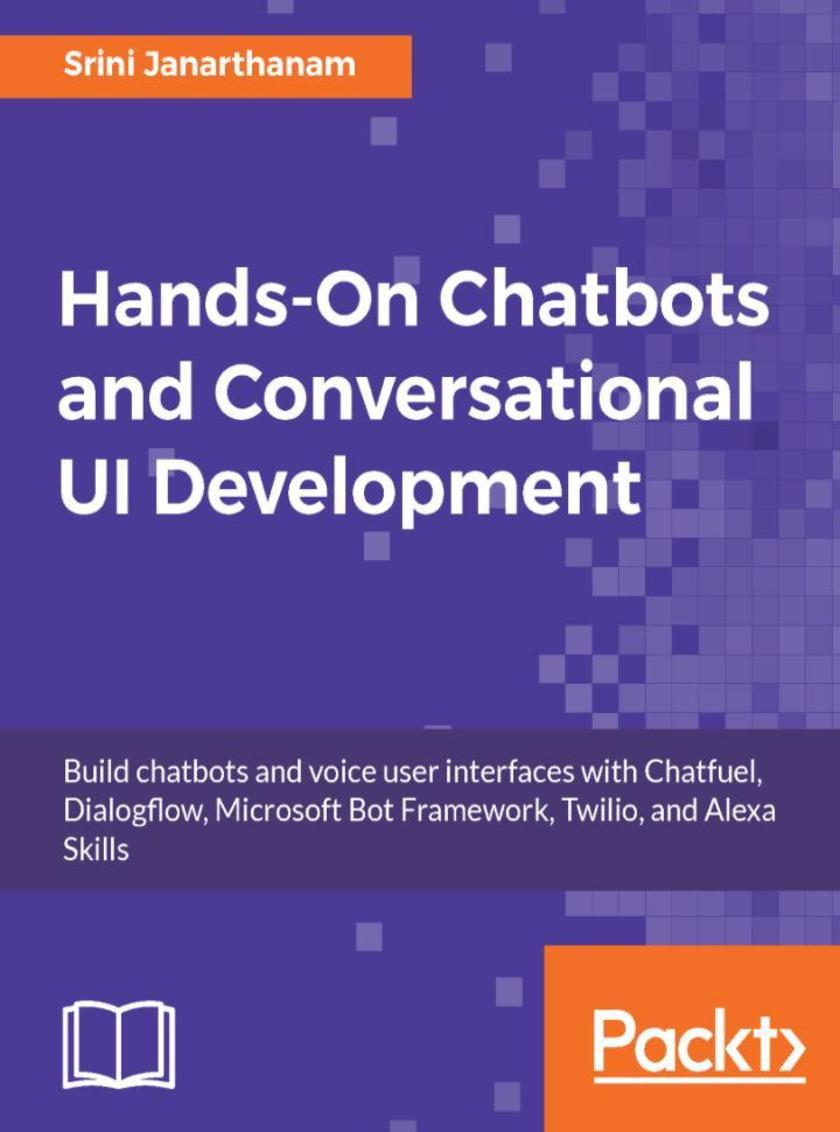
Hands-On Chatbots and Conversational UI Development
¥71.93
Build over 8 chatbots and conversational user interfaces with leading tools such as Chatfuel, Dialogflow, Microsoft Bot Framework, Twilio, Alexa Skills, and Google Actions and deploying them on channels like Facebook Messenge, Amazon Alexa and Google Home About This Book ? Understand the different use cases of Conversational UIs with this project-based guide ? Build feature-rich Chatbots and deploy them on multiple platforms ? Get real-world examples of voice-enabled UIs for personal and home assistance Who This Book Is For This book is for developers who are interested in creating interactive conversational UIs/Chatbots. A basic understanding of JavaScript and web APIs is required. What You Will Learn ? Design the flow of conversation between the user and the chatbot ? Create Task model chatbots for implementing tasks such as ordering food ? Get new toolkits and services in the chatbot ecosystem ? Integrate third-party information APIs to build interesting chatbots ? Find out how to deploy chatbots on messaging platforms ? Build a chatbot using MS Bot Framework ? See how to tweet, listen to tweets, and respond using a chatbot on Twitter ? Publish chatbots on Google Assistant and Amazon Alexa In Detail Conversation as an interface is the best way for machines to interact with us using the universally accepted human tool that is language. Chatbots and voice user interfaces are two flavors of conversational UIs. Chatbots are real-time, data-driven answer engines that talk in natural language and are context-aware. Voice user interfaces are driven by voice and can understand and respond to users using speech. This book covers both types of conversational UIs by leveraging APIs from multiple platforms. We'll take a project-based approach to understand how these UIs are built and the best use cases for deploying them. We'll start by building a simple messaging bot from the Facebook Messenger API to understand the basics of bot building. Then we move on to creating a Task model that can perform complex tasks such as ordering and planning events with the newly-acquired-by-Google Dialogflow and Microsoft Bot framework. We then turn to voice-enabled UIs that are capable of interacting with users using speech with Amazon Alexa and Google Home. By the end of the book, you will have created your own line of chatbots and voice UIs for multiple leading platforms. Style and approach This is a practical book, where each chapter focuses on a chatbot project. The chapters take a step-by-step approach to help you build intelligent chatbots that act as personal assistants.

Beginning C# 7 Hands-On – Advanced Language Features
¥71.93
An advanced C# beginners guide to some of the tougher parts of the C# language! About This Book ? Learn C#, Visual Studio, and object-oriented programming ? Get practical examples of advanced C# language features so that you can easily master them yourself ? Use the C# programming language to work generics and lambda expressions ? Program C# and SQL Server 2014 ? Get ready for your first MVC applications Who This Book Is For This book is for anyone who is interested in learning how to program the more advanced aspects of the C# language. Previous programming knowledge of C# is required, at least to the level of basic object-oriented programming. Readers can benefit from first reading Tom Owsiak’s companion book, Beginning C# 7 Hands-On – The Core Language, as a preparation for the more advanced elements and techniques presented in this book. What You Will Learn ? Learn C# advanced language elements and techniques ? Discover advanced C# techniques with hands-on working examples ? Build on your knowledge of OOP by using C# generics and lambda expressions ? Work with C# and LINQ custom data types ? Program C# and SQL Server 2017 to manage and query data ? Create your first full MVC application In Detail Beginning C# 7 Hands-On – Advanced Language Features assumes that you’ve mastered the basic elements of the C# language and that you're now ready to learn the more advanced C# language and syntax, line by line, in a working Visual Studio environment. You'll learn how to code advanced C# language topics including generics, lambda expressions, and anonymous methods. You'll learn to use query syntax to construct queries and deploy queries that perform aggregation functions. Work with C# and SQL Server 2014 to perform complex joins and stored procedures. Explore advanced file access methods, and see how to serialize and deserialize objects – all by writing working lines of code that you can run within Visual Studio. This book is designed for beginner C# developers who have mastered the basics now, and anyone who needs a fast reference to using advanced C# language features in practical coding examples. You'll also take a look at C# through web programming with web forms. By the time you’ve finished this book, you’ll know all the critical advanced elements of the C# language and how to program everything from C# generics to XML, LINQ, and your first full MVC web applications. These are the advanced building blocks that you can then combine to exploit the full power of the C# programming language, line by line. Style and approach A comprehensive book that blends theory with just the right amount of practical code implementations, to help you get up and running with the C# programming language and its advanced features. You’ll also get to work with other tools and technologies that complement C# programming. Each core part of the C# language is coded as you learn, and code output is tested every time to verify the syntax is working as expected, so it’s easy for you to learn directly from the working code examples. Advanced-level features of C# will be used to code and work through examples.




 购物车
购物车 个人中心
个人中心



